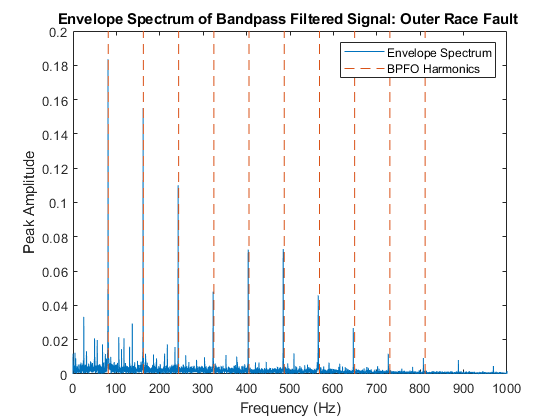Design Condition Indicators at the Command Line
You can derive condition indicators at the command line from signal analysis or model fitting. If you have rotating machinery, you can extract specialized features that incorporate characteristics of your system, such as characteristic fault frequencies, or derive gear condition metrics with sensitivities to specific fault modes. You can derive more general features in the time domain, the frequency domain, or in the time-frequency domain. You can also derive condition indicators by fitting static or dynamic models to your data, and examining model parameters or model behavior to distinguish fault states or predict system degradation. Use command-line feature selection and ranking commands to evaluate the effectiveness of your features. For more information, see Condition Indicators for Monitoring, Fault Detection, and Prediction.
To extract features, you must often first filter or transform your data first into the form that the specific feature extraction operation requires.
Functions
Topics
Condition Indicators Basics
- Condition Indicators for Monitoring, Fault Detection, and Prediction
A condition indicator is any feature of system data whose behavior changes in a predictable way as the system degrades. - Signal-Based Condition Indicators
A signal-based condition indicator is a quantity derived from processing of signal data. The condition indicator captures some feature of the signal that changes as system performance degrades. - Model-Based Condition Indicators
A model-based condition indicator is a quantity derived from fitting system data to a model and performing further processing using the model. The condition indicator captures some feature of the model that changes as system performance degrades.
Condition Indicators for Rotating Machinery
- Condition Indicators for Gear Condition Monitoring
Follow this workflow to identify and evaluate condition indicators for gear condition monitoring. - Motor Current Signature Analysis for Gear Train Fault Detection
This example illustrates how current signature analysis can be applied to extract spectral metrics to detect faults in specific drive gears of a hobby-grade electric servo.



